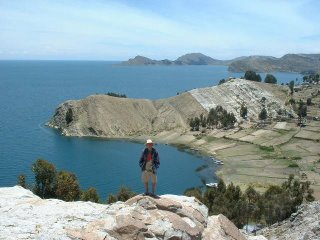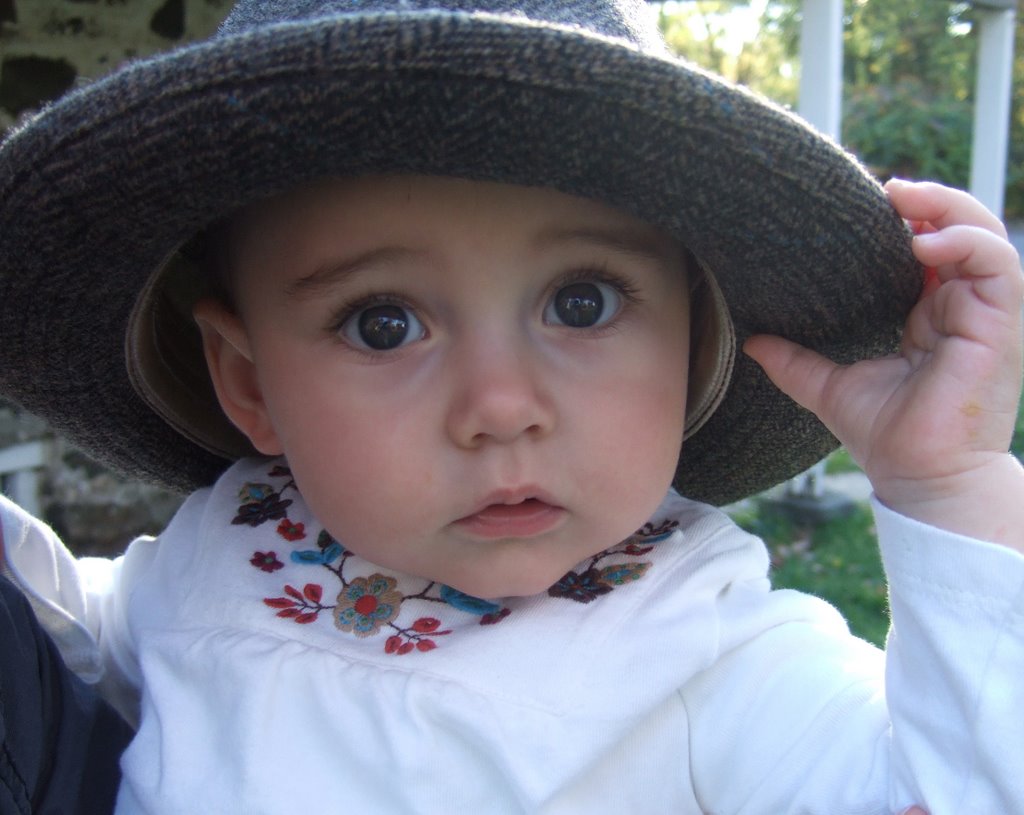Saying Goodbye to Bolivia

Hello dear friends and family,
Before leaving Bolivia, we wanted to visit misty Sorata, a small cobblestoned town perched on a hillside with the Illampu mountain looming above it. This place is reputed for having excellent trekking opportunities, most involving steep ascends to glacier lakes and mountain peaks. Unfortunately for us, the season for clear views and fine weather was passing. These treks are the type that are fantastic because of the awesome views, and we didn't feel like risking days to see nothing but the ground we walked on. Thankfully, Sorata is a charming village without having to leave its narrow lanes, and there are many day hikes through the valley / canyons, which are a lot less strenuous and time consuming. Dan and I opted for a 2.5 hr. hike to a cave with an underground lake and 'vampire' bats. The journey was far more enjoyable than the end destination, as is so often true with life. We enjoyed this quick respite before heading to Lake Titicaca, where we would eventually pass into Peru.
At 3820 meters, Lake Titicaca is one of the highest lakes in the world, and the second largest lake in South America. Our first taste of this renown destination that conjures up all sorts of images of ancient Incan culture, was at Copacabana, Bolivia. I was immediately impressed by how blue and clear the water was. I was expecting to see the typical trash residue that was evident in many other prime tourist destinations, like Uyuni. Instead, I was reminded of the pristine Aegean islands of Greece.
We checked into La Cupola, a posh backpackers oasis with white middle-eastern-like dome ceilings, deep blue accents, hammocks, a guitar for Dan to wail on, book exchange, views of Copacabana bay, and an excellent restaurant, where we had our first try of the fresh local trucha (trout). That night, we were witness to an awesome lightning and thunder storm, that transformed into clear blue skies by the morning.
We woke early to begin our five hour hike to the island's peninsula. All through our hike, I kept wondering why other travelers hadn't enthusiastically reported about the incredible beauty of this trek. We were often alone to contemplate the quiet, with stunning views of the lake, small boats in deep blue bays, and a patchwork of farmland tilled by friendly locals. Part of the trail even involved walking on an ancient Incan trail of stones. When we reached Yampupata, we hired a rather ancient looking man to row us across the lake to nearby Isla del Sol. I think Dan felt a little guilty having a 70 plus man work the oars, or he just wanted the exercise, so he took over for a good half hour. We arrived at the Pilko Kaina Ruins - our first Incan ruin with typical trapezoid doors, niches and windows. Another hours walk along the island's ancient cultivated terraces, and we reached the small village of Yumani, where we found a hostal for the night. I was craving a Bolivian vegetable soup, so we went on a search. After checking out 5 'restaurants', we learned that food is same-same on Isla de Sol - asparagus soup, trucha, potatoes and rice.
Day 2 on the island, and we hired a fisherman to row/sail us 2 hours up to the North of the island. Here we visited the spectacular Incan Chincana ruins. This complex (which is believed to be the birthplace of the Incan sun) is now a maze of stone walls and doorways that look over a beautiful, sandy beach, and glistening blue water. From here, we walked the length of the island, along its' barren mountainous ridge. At sunset, we were treated to a distant, glowing snow-capped view of the Cordillera Real mountain range. Another night on the isla, then back to Copacabana on a tourist boat.
Copacabana is a famous destination for Catholic Bolivians who want to bless their vehicles. That's right! The cathedral holds daily rituals in which visitors/pilgrims can make offerings to God for the safety of their cars, trucks, buses, and the well-being of the drivers and passengers. In front of the church, there are stands where one can buy flowers, ribbons, miniature models of cars, houses, fake money, Virgin Marys, charms, etc.. The priest consecrates the vehicles with holy water, and ritual offerings of alcohol are poured on the car and prayers made. This toasting or offering to the powers that be is called a Cha'lla.
Not far from Copacabana lies the border between Bolivia and Peru. The Bolivians sometimes joke that they have the 'titty' and Peru has the 'caca'. Upon our initial entrance into Peru, I was tempted to agree. When we reached Puno, I was saddened to see that the blue of the lake was now polluted with litter in green algae muck, and there was an unpleasant sulfur smell. Although Puno did not initially strike me as a very pretty town, it's size did mean that there was a wealth of restaurants to choose from, fast internet connection (a rarity), and a great selection of Alpaca wear for ridiculously low prices. Dan finally got himself a traditional handwoven Alpaca sweater for less than $9.
We hadn't come here for hectic city street-life, so our next day was spent on a tour to two Peruvian lake Titicaca islands - Uros and Taquile. Uros is actually not an earth island, but is made of floating reeds, which are regularly replenished. This was an extremely touristy stop, but the novelty was interesting. Walking on the floating islands is like being in one of those little kids bouncy castles. People do actually live on these islands in little huts, but their lifestyle has changed from a quiet, live-off-the-fish of the lake kind, to a daily living that seems to consist of selling trinkets to tourists and charging soles (the Peruvian currency) for photos.
Taquile, which is a 3 hour boat ride from Puno's harbor, proved to be much more culturally interesting destination. The Quechua-speaking people of this island still wear traditional dress, and have a socialist government, where everyone shares work and wealth. They have subsistence farming and are famous for their finely woven hats, belts, coca bags, and clothing. They have 3 laws of the land, which are: Don't steal, don't lie, and don't be lazy. Everywhere we went, we could see this industriousness at work. Both men and women were always knitting, spooling yarn, or weeding/sowing their terraces. We even watched a tiny boy, busy making himself a jumping rope out of local grasses. Many Taquile locals do not speak spanish and they all seemed to speak in a hushed, quiet tone.
By nightfall we were back on the coast, where we caught a nightbus to Cusco. This city is very, very, very pretty. My impressions will come in the next installment. With this chapter, we will finally have all of our photos upto date on our website
http://www.pbase.com/dgsc/bolsor and http://www.pbase.com/dgsc/bolper
Take a look when you get the time.
We miss you all,
Sarah and Daniel



0 Comments:
Post a Comment
<< Home